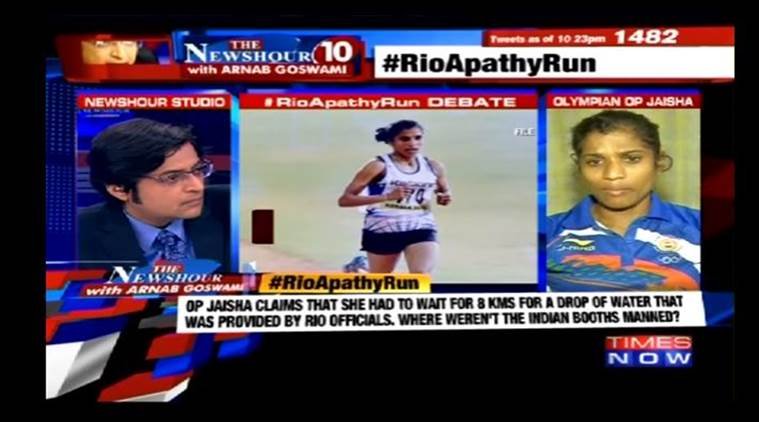I wrote this piece originally for my site www.bodahub.com. I am pasting it in it's entirety here for the Steemit community's reading convenience.
A recent news article speaks about how the US media has largely ignored incidents like the Baton Rouge floods, among others. The story makes a case for why mainstream media tends to ignore southern and mid-western America.
This story strikes a familiar chord with India and her media industry.
A Flawed Approach
A recent article on Quartz talks about the American media and their response to natural disasters and civil clashes. The article states that the media tends to improperly cover events like the Baton Rouge flooding or the Milwaukee conflicts. They shrug it off as "part of life" in the American South and Mid-West.
The media's approach tends to be event based. National media and politicians flock to specific events that have reached a tipping point – like the Flint water crisis, or Ferguson, or now, Baton Rouge. The writer summarises the approach crisply, and brutally:
They come for the chaos. They don’t stay for the banal brutality of the time in between, the slow erosion of opportunities that structure daily living.
The writer argues that dramatic events are important issues, but the media tends to ignore systemic failures and local issues that have led to the problems in the first place. An excellent example of this approach lies in how the media treats incidents of racism across the country. In areas like the South and the Mid-West, race and votes are deeply tied together and politicians (and media) like to tread delicately.
Of Ratings and the Economy
One leading factor for this is in the very business model of the news, particularly since the 2008 downturn. By 2014, one in four journalists lived in a coastal city, down from one in eight from a decade ago – and the 2004 number was disproportionate to the population to begin with. Thanks to the downturn, regional newspapers have struggled to stay afloat, further adding to the situation. National news agencies lose unique local perspective that is critical.
 Flint provided great photo ops.
Flint provided great photo ops.
The business model and wages offered mean that a lot of people cannot afford to live as journalists. This has directly impacted how urban, and specifically black, crime has been reported in areas like New Orleans or Southside Chicago.
A recent USA Today column admits that topics like the presidential race and the Olympics took precedence over Baton Rouge.
More chillingly, the column also attributes lack of attention to "Americans becoming almost numb to the onslaught of human suffering."
In instances like Milwaukee, protesters did not want the media around. Their argument was that media should focus more on the "rust belt community" problems – racism, segregation, jobs, transportation, jobs, police-citizen trust.
These are ignored issues that briefly come into the spotlight during media events.
The author paints a stark picture, but it is one that is all to familiar in India.
The Chennai and Madhya Pradesh Floods
The 2015 Chennai rains wreaked havoc over the city. As the city coped with torrential rain, flooding, death, and mass destruction, the North India-focused mainstream media did not deem it worthy of coverage until much later. Even the voices of the Indian news openly acknowledged it.
 The "ïgnored" 2015 Chennai floods.
The "ïgnored" 2015 Chennai floods.
Programs on news channels routinely ignore the southern states of India, partly because of the presence of local vernacular TV channels and partly because of an inherent bias towards geographical reporting.
In an eerie parallel to the USA, Central India is also being left out. As various states battle floods, mainstream media are busy focusing on the fall out of India's poor Olympic performance, among other such news items. They are important discussions, but not top priority when thousands lose their lives and belongings. The situation is even worse when it comes to covering the North East.
The argument that local news channels bring local issues to light is ridiculous. Does that mean that South India's problems are not India's?
News channels and newspapers have covered the floods in both regions. But the larger point is that they were event based coverage, and nothing more. There has been little coverage of how communities struggle, and sometimes lose, the battle to rebuild their lives. That is coverage that lasts beyond a weeknight TV debate.
 The Olympics means more ratings.
The Olympics means more ratings.
The core problem also remains the same as in the USA. Political interests have invested heavily in the media, both national and regional. Newspapers struggle to survive, most news channels don't make money. Salaries are very low. They have no choice, therefore, to resort to paid journalism and vested interests buying stake. That informs and affects coverage and editorial view.
Just like in the US, exceptions to this rule exist. Traditional and digital media are standing up for the untold and ignored stories. They also play watchdog to the media industry, in a refreshing introspective move.
A Bittersweet Taste
But all said and done, we always knew that mainstream media hides some element of the truth from us. All we say is that there is no need for geographical bias.
On the other hand, the truth has never been popular. And television ratings only recognise popularity. We can only be happy to note that we are not alone when it comes to living in a world of biased and opportunistic news.

